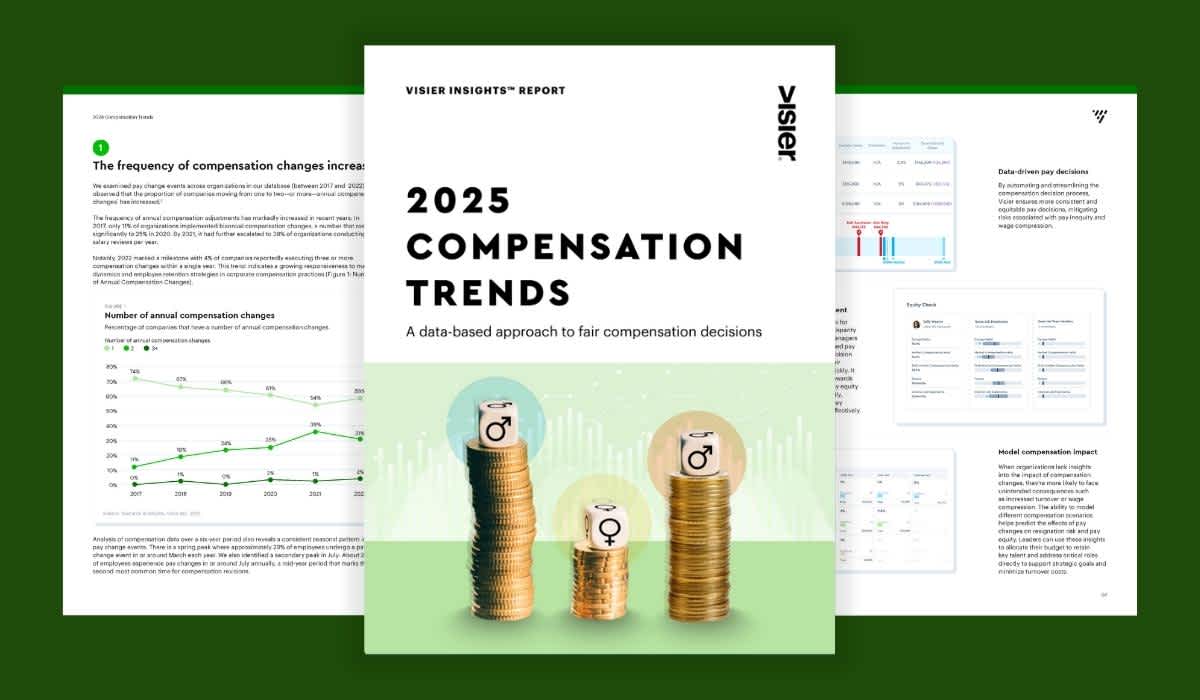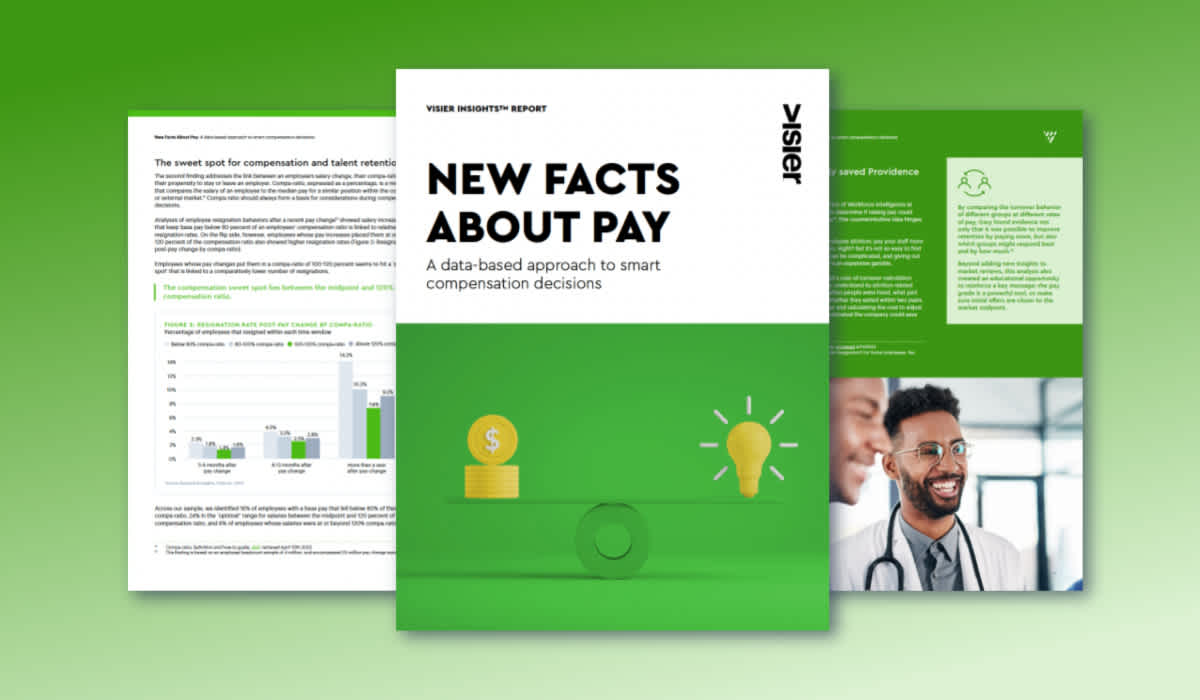Ask Visier: How well does the organization's compensation compare to the market's?
You’re not a compensation expert but you need to advise your managers on compensation? Visier can tell you how well your organization pays people relative to their peers and the market and why this matters.

Compensation, or “comp” as it is often abbreviated, is a specialized area of human resources management that relies on equal parts data and judgment. Compensation decisions affect every employee, but there really are no right or wrong answers, and they certainly aren’t readily available on the internet.
While compensation may not be directly linked to employee experience or engagement, it consistently ranks in the top five reasons why employees join or leave an organization. Knowing that compensation may affect which candidates accept job offers and which employees resign, employers need to be both strategic and data-driven with compensation.

Why should HR and managers know about compensation?
Compensation policy and compa ratio decisions are often some of the more mysterious and closely guarded HR secrets in the business world. For better or worse, the Human Resources function is often tasked with managing compensation within broad guidelines set by boards and executive committees (ExCo). Typically, a board will set an organization-wide compensation policy such as “we pay above the median of the market to attract and retain top talent” and let the ExCo, people managers, and the HR function figure out the details. Figuring out the details and implementing a good compensation plan requires both data and the tools to visualize and work with the data to support decisions.
How do compensation decisions get made?
Compensation policy is usually some version of “pay at market rates.” However, finding the market rate for a given job is not a trivial exercise. Compensation teams do their best to create salary and bonus structures that are informed by market rates, but translating those structures into compensation decisions about individual employees with a given experience, performance and competency profile requires nuance. Compensation structures are also notoriously slow to change and can be quickly left behind in a dynamic labor market. If managers and their HR partners have a way to visualize market and internal compensation data down to the level of each individual employee, they can make better, data-informed decisions.
“Internal relativity” is often a much more relevant question to answer for an employee than market competitiveness. If an employee finds out that the new hire is earning 20% more than they are, they are going to start asking themselves questions, and one day (soon) may ask their manager or HR person those same questions.
Visier includes a feature where a manager or HR person can compare the level of various pay components for one employee with the median or average for a group of similar employees. While this information may not be shared with the employee, it is a lot more useful for a manager than information heard in the (virtual) hallway or during an exit interview.
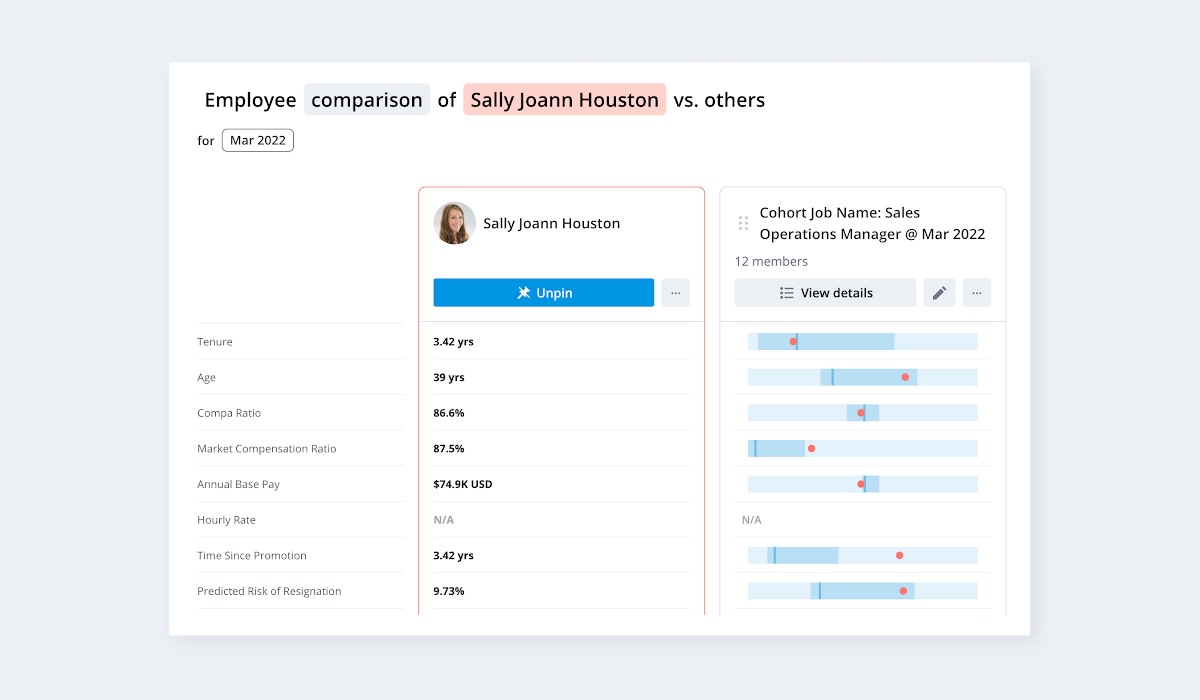
Compensation of one employee compared to internal comparator group (sample data)
What about cost?
Compensation also has a dimension that is blindingly obvious but not always openly discussed around the HR table: every dollar of compensation is also a dollar of cost. When the CEO or CHRO stands up in a shareholder meeting and says “We pay above market median to attract and retain the top talent we need to deliver on our business strategy,” the cost implications ideally need to be well understood. Similarly, if compensation is moving fast in the labor market, implementing ad hoc changes to compensation without fully understanding their cost impact can be a recipe for “blowing the lid off” a compensation structure. Organizations that have a way to quickly model the cost impacts of compensation changes for individuals and groups are well placed to make compensation decisions that are both strategically helpful and affordable.
Visier can quickly calculate actual costs of different pay scenarios using current employee and cost data to support decisions during any regular or one-off salary review process. For example, if the market rate has increased by 10% because of external market forces such as a pandemic or increased competition for talent, how many companies will respond by increasing salaries across the board by a corresponding percentage?
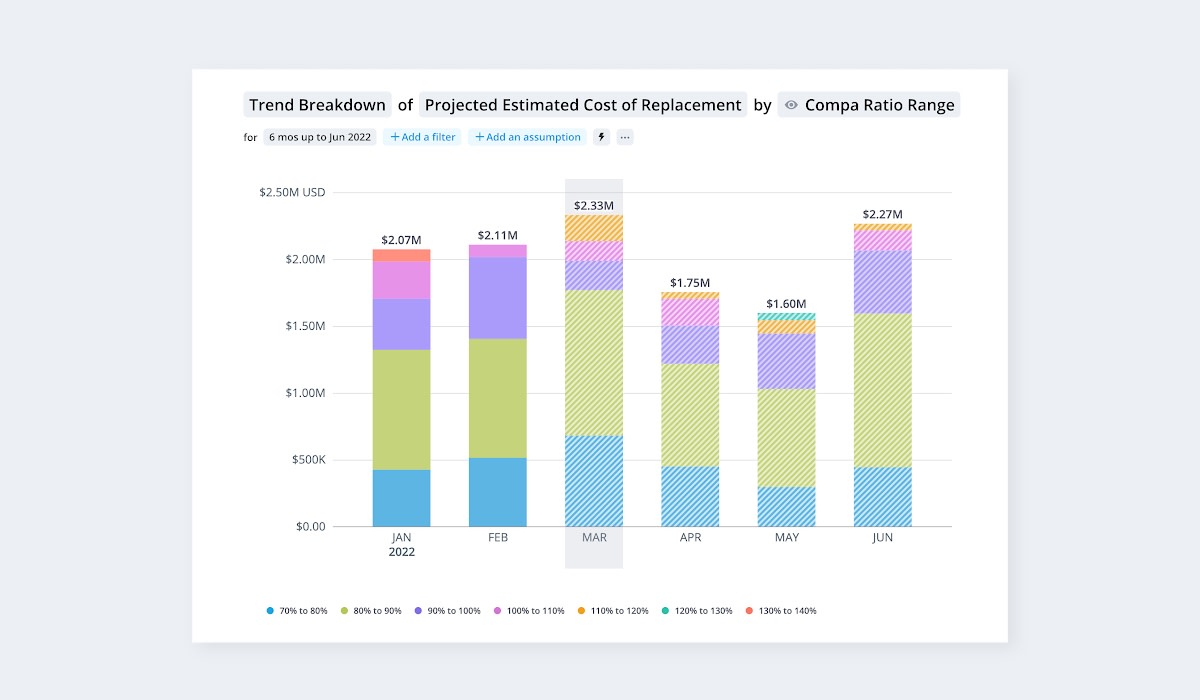
Analysis of cost to bring base salaries up to 100% compa ratio
How does Visier help answer market compensation questions?
“Market competitiveness” of compensation is one of those phrases that can be very simple (e.g. “I’ve just had a job offer that’s 20% more than you are paying me, what are you going to do about it?”) or very complex (e.g. “We pay consulting firm ABC a whole bunch of money every year to advise us on salary ranges that position our midpoints at exactly the 62nd percentile of the market rate for that job in each of the geographies where we operate.”)
Many organizations have detailed market compensation data, but getting that information out to managers and HR advisors in a way that it can be used without breaching confidentiality and privacy rules is problematic. Decisions about compensation typically involve both external (market) and internal comparisons, with a level of precision beyond a quick Google search for market rates. Organizations that can quickly pull down an analysis at the individual employee level that brings in both market and internal comparators are well-placed to make good compensation decisions. Individual factors such as employee performance, promotion history and risk of exit are all helpful to inform good compensation decisions.
Compensation teams often work behind the scenes to show a series of salary ranges with midpoints for each job in an organization. Being able to compare an employee’s actual salary to the range midpoint is often the simplest way to answer questions about market competitiveness. By using the role-based security model of a solution such as Visier, the access of people managers to salary survey data can be controlled so that they only see market salary data relevant to roles on their team. This helps managers and HR representatives make decisions based on the most relevant data rather than simply relying on the easiest data to acquire.
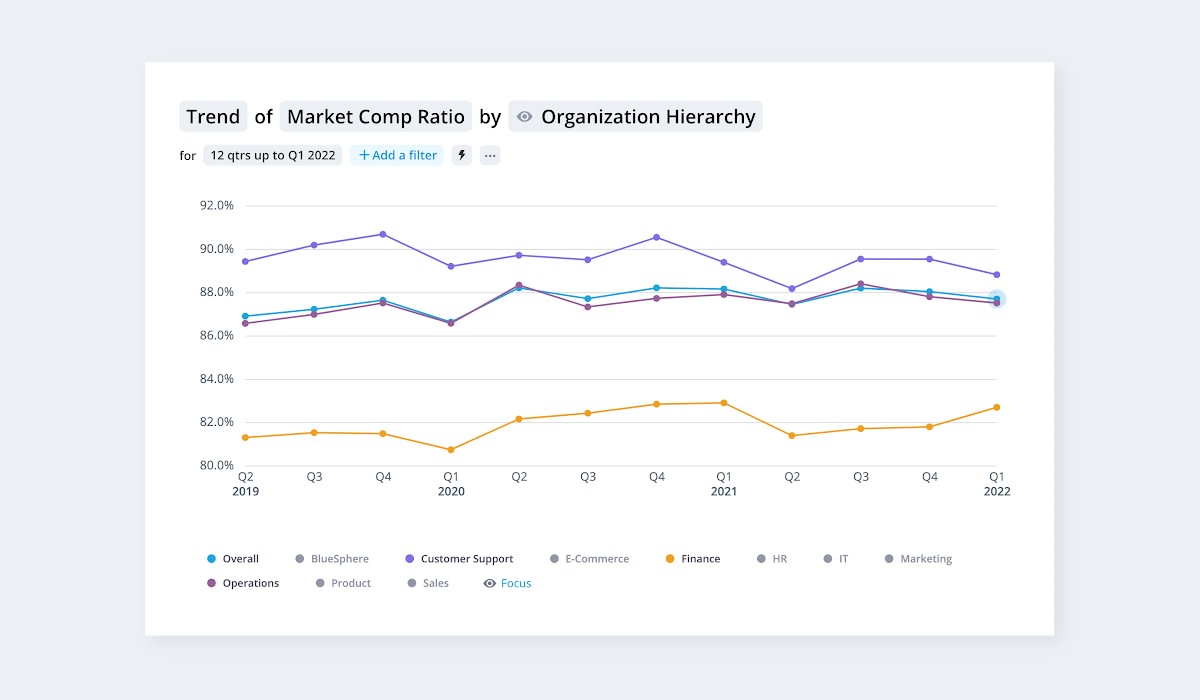
Comparison of actual compa ratio versus market compa ratio to track market competitiveness
What’s the best way for organizations to tackle the topic of compensation?
It might not be feasible to train every people manager, every executive and every human resources person in the nitty gritty details of compa-ratios and salary survey percentiles. However, you can arm all people managers and all human resources advisors with self-serve access to answers to the most common compensation questions. Providing this level of access to basic compensation data will result in higher-quality compensation decisions.
It will also free up the time of your Compensation team so that they can answer some of the more complex questions raised above. Providing these basic answers in a standardized format using data that is refreshed daily will also serve to “foolproof” your compensation answers when compared to each manager or HR person doing their own analysis in Excel using old, inaccurate or incomplete data.

Further reading on compensation and total rewards
Strategic compensation ensures transparent and fair pay for all employees while helping you stay competitive, and attract, and retain top talent. Learn more.
Compensation directly impacts employee retention but remains complex amid evolving laws and preferences. We analyzed the data to uncover key pay trends and challenges. Read the findings here.
Learn how adopting multiple merit cycles can enhance compensation planning, improve employee retention, and align pay with performance.
